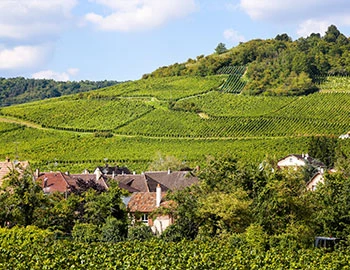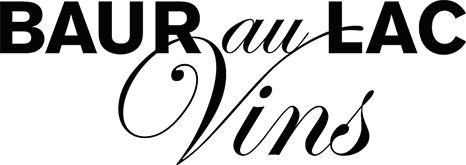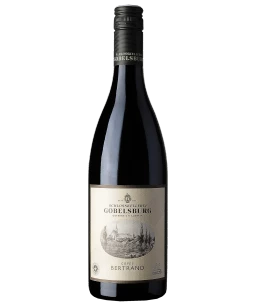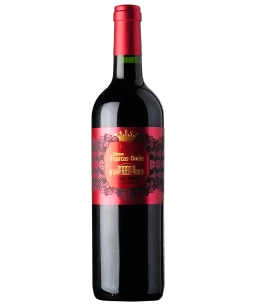
B de Biac 2014
AC Cadillac Côtes de Bordeaux, 750 ml

| Grape variety: | Merlot, Cabernet Sauvignon, Cabernet Franc |
| Producer: | Château Biac |
| Origin: | France / Bordeaux / Côtes de Bordeaux |
Description
B de Biac is an assemblage from the same parcels as Château Biac, but produced with the idea of being drunk younger. Dark fruity and fresh, it is a good companion for relaxed moments. Aromas of fresh fruit with a hint of mint flatter the nose. The wine is full-bodied and lively, with intense flavours of forest floor and ripe, concentrated black fruits. Round and harmonious with excellent potential.
Attributes
| Origin: | France / Bordeaux / Côtes de Bordeaux |
| Grape variety: | Merlot, Cabernet Sauvignon, Cabernet Franc |
| Ripening potential: | 3 to 12 years after harvest |
| Drinking temperature: | 16 to 18 °C |
| Food Pairing: | Coq au vin, Cold fish dish, dried meat, Crispy roast chicken, Mushroom ragout |
| Vinification: | Pumping over |
| Harvest: | hand-picking |
| Maturation: | in large wooden barrel/foudre, long cultivation |
| Maturation duration: | 16 months |
| Volume: | 13.5 % |
| Note: | Contains sulphites |
Château Biac
Sometimes life is full of surprises. The Lebanese Asseily family experienced this first-hand when they became the owners of Château Biac as if by accident in 2006. They regularly spent their summer holidays near Biac, but never would they have dreamt that they would own and manage this wonderful property themselves one day. It’s a fascinating story that Tony and Youmna Asseily are happy to share over a glass of their wine.
Château Biac isn’t located in one of the world-famous towns on the left or right bank of the Gironde, but on the Graves plateau south of Bordeaux in the small town of Langoiran. Idyllically situated, the winery offers a magnificent view of a meander of the Garonne to the south-southwest.
Biac was first mentioned in the 17th century. The present-day château dates back to 1755 and was built by the daughter of the Baron de Langoiran. At the end of the 19th century, Château Biac enjoyed an excellent reputation, not least because the vineyards were only planted with selected Château d’Yquem vines and red vines from the finest wineries in Saint-Émilion. By 2006, however, the winery was in a sad and neglected state.
The Asseily family quickly realised that it would require a lot of work to restore Château Biac’s reputation as one of the finest wineries in the region. They sought professional advice and support, including from Patrick Léon, who had been an oenologist at Château Mouton-Rothschild for 20 years. A thorough soil analysis was carried out and the planting of the vineyards was adapted accordingly, as the soil structure turned out to be extremely diverse. But not only the vineyards, but also the infrastructure of the wine cellar and the buildings were modernised and adapted to the new needs.
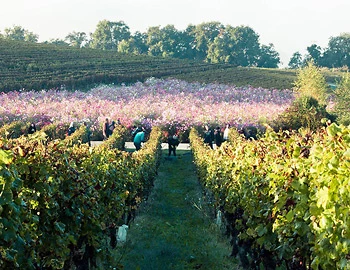
Cabernet Franc
Forefather of the Bordeaux varieties
The Cabernet Franc is one of the oldest varieties of Bordelais and a parent of three other red grapes in the Bordeaux assortment: Cabernet Sauvignon, Merlot and Carmenère. It is distinguished by its complex, flavourful bouquet of raspberry, graphite, violet, liquorice and white pepper. In addition, it presents round, crisp tannins which turn out less strongly than those of Cabernet Sauvignon. While the Cabernet Franc always appears as part of a blend in Bordeaux, it is pressed alone on the Loire. The most renowned appellations are Chinon and Bourgueil. Incidentally, the Cabernet originates not in Bordeaux but in the Spanish Basque Country. Cabernet owes its name to the Latin “carbon”, meaning black.
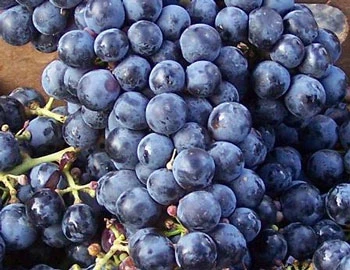
Merlot
Everybody’s darling
Merlot is the most charming member of the Bordeaux family. It shines with rich colour, fragrant fullness, velvety tannins and sweet, plummy fruit. It even makes itself easy for the vintner, as it matures without issue in cool years as well. This is in contrast to the stricter Cabernet Sauvignon, which it complements as a blending partner. Its good qualities have made the Merlot famous worldwide. At over 100,000 hectares, it is the most-planted grape in France. It also covers large areas in California, Italy, Australia and recently in Eastern Europe. The only catch is that pure Merlot varieties rarely turn out well. Its charm is often associated with a lack of substance. Only the best specimens improve with maturity. They then develop complex notes of leather and truffles. This succeeds in the top wines from the Bordeaux appellation of Pomerol and those from Ticino, among others.
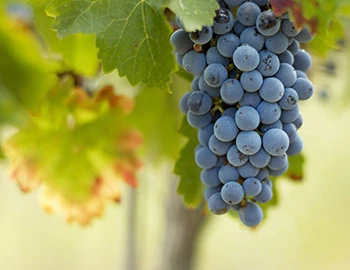
Cabernet Sauvignon
The backbone of Bordeaux
The Cabernet Sauvignon gives the Bordeaux its backbone, yielding deep violet wines with powerful tannins and endless ripening potential. It is the top dog in Médoc, and is placed in all five premier crus of Bordelais. When young, it often appears strict and unapproachable, but with advancing years, its tannins round off. It is wonderfully velvety, and yet always maintains its freshness. Typical flavours include cassis, graphite and cedar. Wherever Cabernet Sauvignon is found, Merlot is not far away. It complements the robust structure of Cabernet with softness, fruit and richness. The Cabernet Sauvignon is the most-exported vine in the world. It delivers persuasive qualities in Italy as an ingredient of the Super Tuscan, or as the flagship variety from California. There, it is lovingly titled “Cab Sauv”. Meat fans should be aware that it fantastically accompanies a grilled entrecôte. The family tree of Cabernet Sauvignon is surprising: its parents are Cabernet Franc and the white Sauvignon blanc.
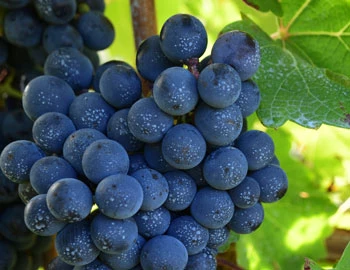
Bordeaux
Bordeaux: high prestige, high quality
With a total area of around 115,000 hectares, Bordeaux may not be France’s largest wine-growing region, but it is certainly its most prestigious. The range of wines produced here today is enormous: ranging from red everyday wines with a great relationship between price and quality to exclusive, and accordingly expensive, premier crus. Elegant white wines and noble sweet specialties round out the spectrum.
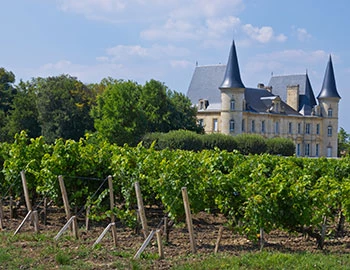
France
France – Philosophy in a bottle
According to French philosophy, wine should be an expression of the soil and climate. They use the word “terroir” to describe this. Terroir makes every wine different, and many especially good. French wine is regarded worldwide as an expression of cultural perfection. The French believe that humans are responsible for the quality of the berries, the vine variety for their character, and nature for the quantity. This philosophy can be expressed succinctly as: “the truth is the vineyard, not the man.”
